Web Resources (Alphabetical by Title)
 Ancient Scotland Ancient Scotland
A personal photographic view of some of the ancient sites of Scotland by Martin McCarthy, who has been taking photographs of Scotland - particularly ancient sites - since 1993. The site contains details on hundreds of ancient places illustrated with thousands of his own photographs. He lives in Glasgow, Scotland.
 Historic Scotland Historic Scotland
Historic Scotland cares for 345 -- as of May 29, 2007 -- historic attractions across Scotland spanning over 5000 years of Scotlandís history and culture. These include pre-historic standing stones, medieval abbeys, gardens, palaces, lighthouses, cathedrals and magnificent castles. Each site listed gives much useful information -- location, opening times, admission charges -- for visitors.
 The Megalithic Portal The Megalithic Portal
"Over the years," according to website creator Andy Burnham, "the project has become a major team effort with input from scores of photographers, archaeologists, locals and visitors...An overriding reason to do this is that many of these ancient sites are not protected in any way, and many have disappeared over the last 50 years or so under development and intensive agriculture. Even sites that are scheduled have limited real protection, so our mission is to document, publicise and protect these remaining sites."
 Megalithics Megalithics
An archive of over 5000 photos of stone circles and other megalithic monuments in the British Isles, Ireland, and Europe. Portal Dolmens, Recumbent Stone Circles, Cup and Ring Carvings, Long Barrows, Cairns, Passage Graves, Wedge Tombs, etc. Most sites have full spherical VR panoramas and infrared photography, plus ten figure map references measured on site with a GPS unit.
 Stone Pages Stone Pages
Stone circles, dolmens, ancient standing stones, cairns, barrows, hillforts and archaeology of megalithic Europe with special pages on Scotland, England, Ireland, and Wales, among others. Created in 1996 by Paola Arosio & Diego Meozzi, the site has grown to over 4,000 pages. The authors live in Trevignano Romano, north of Rome, Italy.
 Undiscovered Scotland Undiscovered Scotland
This site is a combination of visitor guide, accommodation listing, and business directory, and includes links to accommodation providers and businesses divided by area across the country; in-depth and illustrated feature pages showing what Scotland is really like; and information pages listing contacts, links, and sources of additional information. The site contains 13 sections, each corresponding to a different region of Scotland.
 Wikipedia Wikipedia
Wikipedia -- from wiki (a type of collaborative website) and encyclopedia -- is a multilingual, web-based, free content encyclopedia project written collaboratively by volunteers that currently ranks among the top ten most-visited websites worldwide.The vast majority of its articles can be edited by anyone with access to the Internet. Contains several hundred useful pages on specific saints, holy sites, churches, monasteries, abbeys, among others, which are most useful to this website.
Print Resources (Alphabetical by Author)
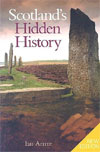 Ian Armit Ian Armit
Scotland's Hidden History (New Edition)
Stroud, Gloucestershire: Tempus Publishing, 2006
The spectacular Bronze Age remains on Orkney, the imposing Iron Age hill forts and brochs, the Antonine Wall built by the Romansóthese are but a few of the best-known surviving monuments in which Scotland is so rich. This updated edition of Ian Armitís classic guide to Scotlandís archaeological heritage is complete with detailed instructions as to how to access every major site.
 Janet and Colin Bord Janet and Colin Bord
Photography by Jason Hawkes
Prehistoric Britain from the Air
Wigston, Leicestershire: Silverdale Books, 2004
The book is divided into three main sections, England, Scotland and Wales and covers hillforts, standing stones, stone circles, henges, hillfigures, burial chambers, man made caves, ancient villages, huts and long barrows. The informative narrative provided about each site investigates myths and legends associated with the sites and this is interwoven with the archaeological evidence providing an account of how each site was used and some insight into the ancient patterns of life associated with the sites.
 Dave Hamilton Dave Hamilton
Mysterious Britain
Bath: Wild Things Publishing, 2020
Wild ruins B.C. reveals Britainís extraordinary ancient history, from 10,000 years ago to the birth of Christ. Exploring Britainís finest wild sites, discover the lost remains and mysterious stones that lie hidden in some of the most beautiful landscapes of Britain. From sacred tombs and caves, to awe-inspiring stone circles and earthworks, Bronze Age brochs to dramatic Iron Age hillforts. Most valuable for the visitor are his elaborate instructions on how to get to the sites
 Andrew McCloy and Andrew Midgley Andrew McCloy and Andrew Midgley
Exploring Roman Britain
London: New Holland Publishers, 2006
Author Andrew McCloy selects 15 walks designed to encompass some of Britain's most distinctive Roman landscapes. With photographs by Andrew Midgley, this work offers insights into Roman culture and innovations and celebrates the enduring legacy of the Roman Empire in England, Wales, and Scotland. Sections include Roman Roads, Roman Towns, Roman Buildings, and Roman Fortifiucations and Military Bases.
 The Old Stones: A Field Guide to the Megalithic Sites of Britain and Ireland. The Old Stones: A Field Guide to the Megalithic Sites of Britain and Ireland.
London: Watkins Publishing, 2018
The most comprehensive and thought-provoking field guide gives unparalleled insight into where to find over 1,000 of British and Irish prehistoric places in England, Scotland, and Wales and how to understand them, by drawing on the knowledge, expertise and passion of the archaeologists, theorists, photographers and stones aficionados who contribute to the world's biggest megalithic website - the Megalithic Portal. It was judged the Current Archaeology Book of the Year in 2019. A very valuable resource.
 Alistair Moffat Alistair Moffat
Before Scotland: The Story of Scotland Before History
New York: Thames & Hudson, 2005
This book delves deep into the little-known world of the Picts, Scots, and others who lived before written records. Scotland itself is the only connection between passages on the disparate topics of geology, ancient and modern history, archeology, biology, and anthropology. The book resists the current fashion in nonfiction to turn history into narrative.
 Gerald M. and Dorothy A. Ruzicki Gerald M. and Dorothy A. Ruzicki
In Search of Ancient Scotland, A Guide for The Independent Traveler
Mead, Washington: Aspen Grove Publishing, 2000
Walk the moors with Scotland's prehistoric people, climb its crumbling castle walls, stand on its battlefields alongside its great heroes, feel the presence of its ghosts held tight in images spun by ancient Celts. This book transports armchair travelers or active explorers of all ages back in time to a Scotland most visitors never see. In this friendly, lively book, the authors guide readers to more than 200 ancient monuments to uncover unsual features, legends and history.
 Chris Scarre Chris Scarre
The Megalithic Monuments of Britain and Ireland
London: Thames & Hudson, 2007
From a Professor of Prehistory at the University of Durham and a specialist in the prehistory of Western Europe, this work offers an examination of some of the most varied megalithic monuments in Europe that are found in the Britain and Ireland organized by geographical area. From the Neolithic Age and the arrival of pottery and farming some 6,000 years ago to the beginning of the Bronze Age, people used megaliths, earth, and wood to build grandiose monuments. The number and sheer diversity of these structures is astonishing, from massive stone rows and circles to barrows, chambered tombs, and earthwork enclosures. Henges and cursus monuments, which often lacked stone elements, also belong to the same general category of monumental prehistoric architecture.
 Rupert Soskin Rupert Soskin
Standing with Stones:
A Photographic Journey through Megalithic Britain and Ireland
New York: Thames & Hudson, 2009
From the southernmost tip of Cornwall to the far Scottish isles, a wonderful variety of ancient stone monuments still exists in Britain and Ireland, and this book guides the reader to over one hundred of them. Some megalithic sites, like Stonhenge and Newgrange, are well researched and often visited, while others, such as Fernworthy and Bleasdale, are barely known. From stone circles and henges to long barrows and cairns, our distant ancestors adapted and shaped their monuments to all environments, leaving us the tantalizing signs of their long-forgotten lives.
 Homer Sykes Homer Sykes
Celtic Britain
London: Cassell Paperbacks, 2001
Journey into mysterious Celtic landscapes, and view the fascinating artifacts they bequeathed us. Over 120 photographs take you from Cornwall, through England and Wales, and up to Scotland. Visit little-known locations from pre-Celtic times, ruined cells where holy men performed Christian ceremonies during the Dark Ages, and enigmatic sites such as Stonehenge, Avebury, and places shrouded in Arthurian legend. A powerful narrative reveals the historical and archeological evidence surrounding Celtic myths, folktales, saints, and more.
 Homer Sykes Homer Sykes
Mysterious Britain
London: Weidenfeld and Nicolson, 1995
Throughout Britain's length and breadth, ancient tribes, druids, Celtic saints, medieval knights, and 18th-century landowners have bestowed upon future generations a wealth of astonishing sights, structures, and landmarks. These awesome sights appear in evocative color photographs, richly enhanced with the history, legends, and folktales that surround them.
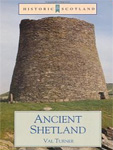 Val Turner Val Turner
Ancient Shetland
London: B.T. Battsford Ltd./Historic Scotland, 1998
Covering a timespan of 8000 years - from Mesolithic times up to the Viking/Norse period - this exploration of ancient Shetland investigates: death and ritual in Neolithic times; domestic life in the Bronze Age; unsettled times in the Iron Age; and the Picts and Christians.
Other Resources: DVDs
Standing with Stones
DVD
 There are about 1,000 stone circles in the U.K. and Ireland. If you include other megalithic monuments such as stone rows, long barrows, cairns, cists, standing stones and others, the number runs to tens of thousands. Yet most people can only name one. This DVD is an exploration beyond Stonehenge, a discovery of the wealth that is Megalithic Britain. More than two years in the making, this film, written and presented by explorer and naturalist Rupert Soskin and produced and directed by Michael Bott, takes you from the tip of Cornwall to Wales, Ireland, the Isle of Man, and Scotland as far as the Outer Hebrides and Orkney on an unforgettable journey through the landscape of the ancient past. There are about 1,000 stone circles in the U.K. and Ireland. If you include other megalithic monuments such as stone rows, long barrows, cairns, cists, standing stones and others, the number runs to tens of thousands. Yet most people can only name one. This DVD is an exploration beyond Stonehenge, a discovery of the wealth that is Megalithic Britain. More than two years in the making, this film, written and presented by explorer and naturalist Rupert Soskin and produced and directed by Michael Bott, takes you from the tip of Cornwall to Wales, Ireland, the Isle of Man, and Scotland as far as the Outer Hebrides and Orkney on an unforgettable journey through the landscape of the ancient past.
A History of Ancient Britain
DVD
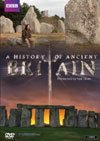 Historian and archaeologist Neil Oliver travels the British Isles to tell the story of the very beginnings of the land and its people. The series traces the development of Britain, from the glacial wasteland of 12,000 BC, through the glories of the Stone Age to the magnificence of international Bronze Age society Ė following the growth of farming and trade; the establishment of homes and hamlets and the sophisticated spiritual life of the country, including the incredible creation of the monument at Stonehenge. The four parts are: Episode 1: Age of Ice; Episode 2: Age of Ancestors; Episode 3: Age of Cosmology; Episode 4: Age of Bronze. Originally broadcast on BBC in 2011. Historian and archaeologist Neil Oliver travels the British Isles to tell the story of the very beginnings of the land and its people. The series traces the development of Britain, from the glacial wasteland of 12,000 BC, through the glories of the Stone Age to the magnificence of international Bronze Age society Ė following the growth of farming and trade; the establishment of homes and hamlets and the sophisticated spiritual life of the country, including the incredible creation of the monument at Stonehenge. The four parts are: Episode 1: Age of Ice; Episode 2: Age of Ancestors; Episode 3: Age of Cosmology; Episode 4: Age of Bronze. Originally broadcast on BBC in 2011.
A History of Celtic Britain
DVD
 Historian and archaeologist Neil Oliver travels the British Isles to tell the story of the very beginnings of the land and its people. In the second part of this series, Neil Oliver tells the story of Britain before and during the Roman occupation. The series traces the development of Britain from 1000 BC to 400 AD. It shows how a thriving Iron Age Britain became part of the Roman Empire, heralding an era of luxury for some and harsh subjugation for many; it reveals how Celtic communities survived north of Hadrianís Wall and around the fringes of the island and examines how a new Romano-British culture emerged. The four parts are: Episode 1: Age of Iron; Episode 2: Age of Warriors; Episode 3: Age of Invasion; Episode 4: Age of Romans. Originally broadcast on BBC in 2011. Historian and archaeologist Neil Oliver travels the British Isles to tell the story of the very beginnings of the land and its people. In the second part of this series, Neil Oliver tells the story of Britain before and during the Roman occupation. The series traces the development of Britain from 1000 BC to 400 AD. It shows how a thriving Iron Age Britain became part of the Roman Empire, heralding an era of luxury for some and harsh subjugation for many; it reveals how Celtic communities survived north of Hadrianís Wall and around the fringes of the island and examines how a new Romano-British culture emerged. The four parts are: Episode 1: Age of Iron; Episode 2: Age of Warriors; Episode 3: Age of Invasion; Episode 4: Age of Romans. Originally broadcast on BBC in 2011.
Orkney's Stone Age Temple
DVD
 On a windy promontory called the Ness of Brodgar on Orkney, thereís a major dig going on Ė a 5,000-year-old Neolithic site that is rewriting the archaeological record
of ancient Britain. A huge outer wall rather militates against a domestic arrangement. And the layout of the buildings gives credence to the idea that this might have been a major religious site, built 500 years before Stonehenge, with close links to other major Neolithic sites nearby, undisturbed archaeology and artefacts are found there, including wall decorations, pigments and paint pots, all helping to increase knowledge and understanding of the Neolithic people. A History of Ancient Britain Special originally broadcast on BBC in 2012. On a windy promontory called the Ness of Brodgar on Orkney, thereís a major dig going on Ė a 5,000-year-old Neolithic site that is rewriting the archaeological record
of ancient Britain. A huge outer wall rather militates against a domestic arrangement. And the layout of the buildings gives credence to the idea that this might have been a major religious site, built 500 years before Stonehenge, with close links to other major Neolithic sites nearby, undisturbed archaeology and artefacts are found there, including wall decorations, pigments and paint pots, all helping to increase knowledge and understanding of the Neolithic people. A History of Ancient Britain Special originally broadcast on BBC in 2012.
A History of Scotland: Episode 1-The Last of the Free
DVD
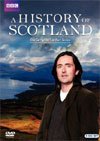 At the dawn of the first millennia, there was no Scotland or England. In the first episode of this landmark series, Neil Oliver reveals the mystery of how the Gaelic Scottish Kingdom - Alba - was born, and why its role in one of the greatest battles ever fought on British soil defined the shape of Britain in the modern era. Presented by Neil Oliver. Originally broadcast on BBC in 2008. At the dawn of the first millennia, there was no Scotland or England. In the first episode of this landmark series, Neil Oliver reveals the mystery of how the Gaelic Scottish Kingdom - Alba - was born, and why its role in one of the greatest battles ever fought on British soil defined the shape of Britain in the modern era. Presented by Neil Oliver. Originally broadcast on BBC in 2008.
The Tower People of Shetland
DVD
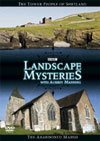 Ancient towers in the Shetland Isles are the legacy of an ancient, pre-Roman civilisation. On the Shetland Isles, on the far edge of Europe, a series of monumental stone towers Ė known as Brochs - once dominated the landscape. Aubrey Manning, Presenter, sets off to discover what sort of community built the Broch towers and for what purpose. On the island of Mousa, he visits the most complete Broch anywhere in Scotland and discovers its sophisticated architecture. He also visits a recently discovered site at Scatness, where a Broch is at the heart of an Iron Age settlement. Meanwhile, carbon dating of material from the Scatness Broch revealed a date of 400 B.C., much earlier than expected. It rules out the theory that the Brochs were built as defence against the Romans. It seems the Brochs may instead have been prestigious homes for the elite of society. Manning concludes that in the Iron Age, Shetland was home to one of the most sophisticated and successful communities in Western Europe. Originally broadcast on BBC in 2003.
Ancient towers in the Shetland Isles are the legacy of an ancient, pre-Roman civilisation. On the Shetland Isles, on the far edge of Europe, a series of monumental stone towers Ė known as Brochs - once dominated the landscape. Aubrey Manning, Presenter, sets off to discover what sort of community built the Broch towers and for what purpose. On the island of Mousa, he visits the most complete Broch anywhere in Scotland and discovers its sophisticated architecture. He also visits a recently discovered site at Scatness, where a Broch is at the heart of an Iron Age settlement. Meanwhile, carbon dating of material from the Scatness Broch revealed a date of 400 B.C., much earlier than expected. It rules out the theory that the Brochs were built as defence against the Romans. It seems the Brochs may instead have been prestigious homes for the elite of society. Manning concludes that in the Iron Age, Shetland was home to one of the most sophisticated and successful communities in Western Europe. Originally broadcast on BBC in 2003.
|